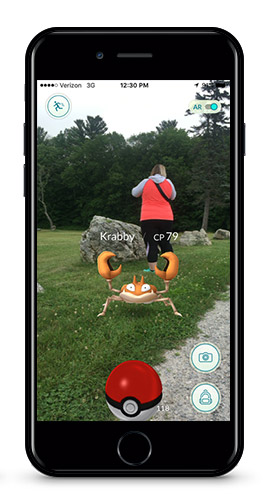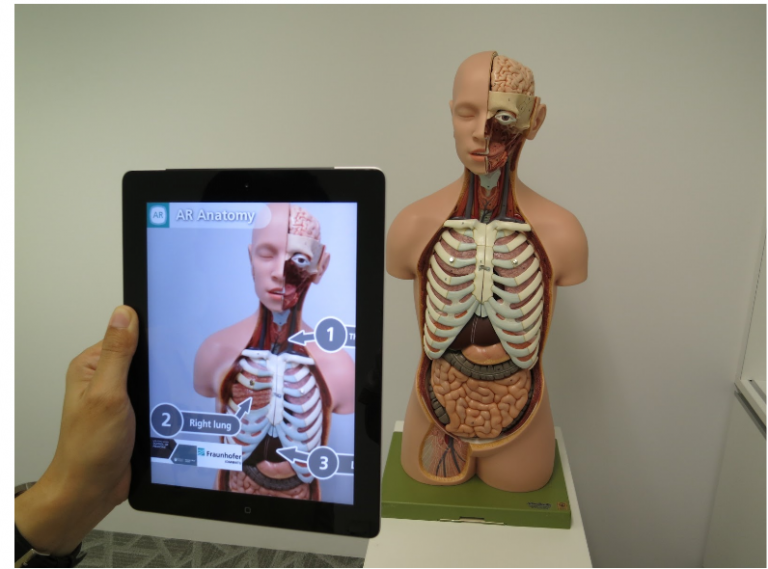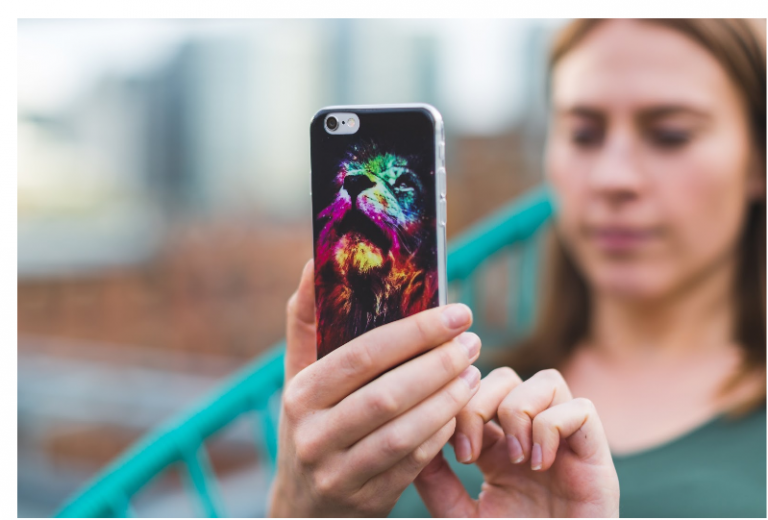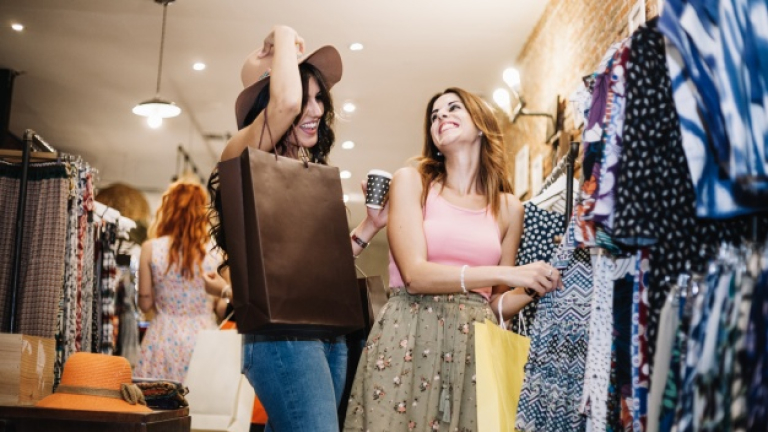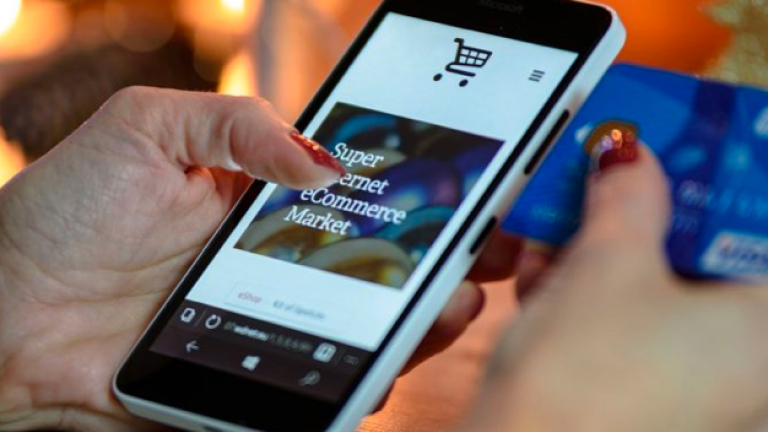In a post PC era, industries across the globe have redefined the ways of connecting with their customers. The retail industry landscape is also shifting owing to the increased penetration of internet & smartphones and emergence of innovative technologies like AR/VR, AI, IoT, etc.
Retailers are working towards using cutting-edge technologies to create delightful, customised and omnichannel shopping experiences for buyers.
For business leaders staying on top of the latest developments and overall mobile and technology trends is critical.
In this article, we will take a closer look at the top 10 interesting mobile and technology trends which are revolutionising the retail landscape across the globe.
1. Today’s digitally-savvy buyer seeks an omnichannel experience
Easy access to the internet and growing penetration of smartphones has influenced almost every aspect of a consumer’s life, including shopping. Consumers are doing more than just searching for product information on the web, today more and more consumers are turning to online portals for making a final purchase. According to a study, overall 67% of millennials and 56% of Gen Xers prefer to shop online rather than in-store.
Though in-store remains the major contributor to the retail economy; online sales are growing at an astounding speed. It is expected that online retail will account for 8.8% of overall retail sales and will register a growth of 89% ($2489 Trillion) by 2018, as compared to its contribution in 2015.
The primary reasons behind the whopping growth of online sales are growing smartphone & internet penetration and changing customer expectations.
While baby boomers wanted to purchase products which were global and boasted of prestigious brand names; millennials are inclined towards buying locally-sourced, authentic and environmentally friendly products. Further, millennials are more willing to save money than spending it on ‘brand names’ which explains their dwindling interest in branded stores.
According to a report by Accenture, Forty-one percent of millennials examine merchandise at a nearby retail store and then shop for it online to find the lowest price.
Taking a cue from this shift in consumers’ shopping habits, retailers are striving to build an omnichannel experience for their customers. Largest offline retailers across the world like Walmart are investing in an online shopping experience; similarly, largest online retailers like Amazon are building brick and mortar stores.
It is apparent that these retail giants do not want to leave any gap and are taking steps to approach their customers at every possible touch-point – online & offline.
For retailers small or big, the implications are rather clear – build an omnichannel shopping experience for customers, which demands an integrated approach including both offline and online presence.
The lines between online and offline shopping experiences are also blurring, and prudent retailers are realising this fact and acting upon it. Walmart, for example, has started using touchscreens in some stores to enable product searches. Retailers are also deploying mobile devices to enable online ordering in-store and offer easy access to inventory searches for customers. For e.g. Lowe’s mobile app allows customers to search and see the entire catalogue, and purchase for in-store pickup, have items delivered directly or find Lowe’s store near their vicinity.
It has become critical for retailers to build a seamless and an easy online shopping experience not just to acquire but retain customers as well.
Further, given the fact that 45% of millennials purchase online through marketplaces like Amazon, small and mid-size retailers must look at listing their products on such online portals.
2. Cross device shopping experiences
Today’s digitally savvy consumers are connected via multiple screens, sometimes at the same time. At an average, Millennials use 3 screens and gen-Z use 5 screens at a time.
According to a study, in 2016 one-third of online retail transactions involved two or more devices across all the retail categories. Throughout the buyer’s journey consumers end up using different devices for individual actions. And these interactions are more complex than the conventional wisdom of ‘browsing on mobile and buying on desktop’. Today’s consumers love their mobiles, and it is an integral part throughout the buyer’s journey too.

Image source: Criteo.com
However, the desktop still remains the preferred method of making a final purchase. While mobile accounts for 58.7% of purchases in the UK; in the US, the majority – 54.6% – still use the desktop.

One of the reasons why most of the shopping dollars are still getting spent on the desktop is that most retailers fail to provide a seamless and end to end mobile shopping experience.
A survey done by Newstore found that only 22% of the retailers offer mobile apps that can be used for making purchases. An additional 21% have non-shoppable apps that show products or have other features, but do not allow transactions to be completed through the app.
For retailers, it is important to understand their interactions across platforms and offer intuitive and customised user experience across all the devices that customers are interacting with.
Device performances also vary by the time of the day for e.g. in the US customers shop the most on the desktop during work hours and mobile purchases peak during other hours and weekends.
For making the most out of their cross device strategy, retailers will have to track consumer’s buying behaviour not just across devices but across time too and devise strategies to reach out to them at the right time on the right device.
3. M-commerce is on the rise, and mobile apps are leading this growth
App economy is expected to reach a whopping $6.3 Trillion by 2021 and m-commerce is going to be a major contributor to this revenue.
For retailers choosing between the web and mobile app is an eternal dilemma.However, statistics are inclined to suggest that mobile apps drive more engagement compared to mobile web. Mobile traffic dominates the overall internet traffic, and mobile apps get the lion’s share of consumer’s mobile time with more than 3 hours a day and 89% of the mobile time devoted to mobile apps.
According to a report by PredictSpring mobile apps can drive 3x times more conversions vs. mobile web. Another study suggests that Gen Z are twice as likely to convert on mobile. However, they are quite aversive to poorly functioning apps and websites.

Image Source: PredictSpring
One such example of mobile apps leading to higher conversion is McDonald’s India’s – Mc Delivery app. Last year, to make their mobile app a preferred medium of ordering, McDonald’s India decided to revamp the app. With an intuitive, personalised and simple user interface, the Mc Delivery app was able to garner double the traffic and 103% more orders by redirecting traffic from the web based platforms.
What leads to this positive influence of mobile apps on conversion rates?
Speed and simplicity are the two primary reasons of this. Mobile users are used to simple UI and faster loading speeds, owing to the experience they get on the extensively used social media and messaging apps. Even if the mobile web experience is simplified, it is hard to get the speed factor right all the time. Today’s shoppers have a lower attention span, and lesser time, any delay in loading speed can lead them to abandon an app or divert them to other sites.
According to a recent study, 60% of Gen Z will not use an app or website that is too slow to load, and 62% won’t use an app if it’s difficult to navigate.
Slower sites and apps not just diminish user experience but also result in revenue loss. According to a report, even 1 second of delay in loading speed costs Amazon, 10% on sale, which is $13.6 billion every year.
Sadly, very few retailers make mobile experiences simple, functional and personalised for users. Of the few brands which offer mobile apps, most do not use them efficiently. According to a survey, not many retailers are taking full advantage of mobile technology, almost 36% of retailers miss using push notifications on their apps, and out of the retail brands which offer native apps, only 24%display real-time inventory and a mere 2% offer social sharing options.
For retailers, who have not yet invested in a mobile app, optimising the mobile web experience should be an immediate action point and planning to create a mobile app platform in the near future should be a top priority on their list.
However, while building a retail mobile app the expectations of consumers from e-commerce apps should be kept in mind. According to a survey done by Clutch, the top reasons consumers use mobile apps are -deals & offers, flexibility, price and product comparisons and saving time.

Image source: Clutch.com
Further, consumers expect their retail apps to be more than just a buying and browsing platform.
They want innovative, high tech and personalised features on their apps.
In essence, they want their apps to act as a personal shopping assistant to them which can help them with product recommendations, price comparisons, discounts through push notifications, options for social sharing, etc.
For retailers aiming to invest in mobile apps taking into account the above factors and introducing innovative features in their app can give them an edge over the competitors and ensure high customer retention rates.
4. Mobile payments and Digital wallets drive conversations
For consumers, a secure and easy checkout option is of prime importance when it comes to online shopping, and digital wallets can facilitate that. When it comes to mobile apps; digital wallets and in-app payments make life easier for the user by eliminating the need to fill out complex forms on a smaller screen.
The digital wallet market is booming, and consumers are increasingly moving away from hard cash to virtual money mostly because of the convenience factor. In fact, this year Apple Pay’s Monthly Active User’s grew by an astounding 450%. M-commerce is one of the key contributors to this growth. Also, in 2016 in-app payments in retail saw a 57% YoY growth.
The British Retail Consortium estimates that the use of cash has decreased by 14% over the past five years.
Forward thinking retailers are already offering options of mobile payments to their customers even in their offline stores. For instance one of the leading retailers J.C. Penney has adopted payments through Apple Pay across all its stores.
Today’s consumers are moving towards convenient payment options like m-payments, digital wallets, in-app payments, etc. Even payments through Wearables (otherwise considered to be a nascent technology) are also seeing growth. It is estimated that payment transaction volume from Wearables could reach $501 billion by 2020. This is an opportunity which still hasn’t been explored much by the retail industry.
Retail industry must pay heed to the promising attitude of consumers towards mobile wallets and use it to make their interaction simpler on their online and offline platforms. Digital wallets enable users to complete their check out process with just a few taps, making the shopping experience more delightful for them.
5. Live chats giving real time assistance to shoppers
Customer support in e-commerce plays a significant role. A live chat option on the e-commerce platforms (mobile and web) can augment users’ experience and increase conversion rates. It is a known fact that a poor customer care service can adversely affect a brand’s reputation and result in a higher churn rate. According to a survey, 60% of customers say that they have decided to not purchase from a particular retailer after a poor customer service experience.

Live chat solutions can help retailers in augmenting customer experience on their platforms with real time assistance throughout the buyer’s journey. According to a report, live chat app solutions have the highest satisfaction level for any customer service channel, with a 73% approval rating.
Smaller retailers are keener to adopt live chat services because it can help them in connecting with the customers during the purchase process and reduces the chances of post purchase customer grievances, which in turn reduces their customer service investment.
According to Michael, merchants have been adopting their services at an annual rate of 84% and have experienced a 100 to 300 percent increase in order size when customers speak to a representative through live chat.
Even larger retailers like Walmart and Nordstrom have adopted live chat to improve user experience on their platforms.
However, one of the drawbacks live chat options are known to have is that they slow down the performance of the sites. This is something retailers must bear in mind if they choose to implement live chat services on their platforms.
6. Innovative ad formats are driving sales
Online advertising is booming. According to an IAB report, digital ad revenue grew to $72.5 billion in 2016. Retailers across the globe are using contextual ads across different platforms to drive sales. In 2017, retail paid clicks were 52% of all the PLAs(Product Listing Ads) on Google.
This boost in online advertising is leading to the emergence of innovative ad formats by various ad platforms, for retailers to experiment with. Exposure to right ads in the right context is driving conversions for brands. Some of the examples of different ad formats being used by the retail industry are:
a. PLA (Product Listing Ads) on Google
b. Geo targeted local ads
c. Targeted pins on Pinterest
d. Goal based bidding ads on Snapchat
e. Contextual ads of Facebook Messenger


Online ads are not just driving online sales; they are positively impacting in-store sales as well. Location based ads and In-ride/In-hand recommendation ads are formats which are driving footfalls for brick and mortar stores.
Platforms like Uber, Foursquare and Nextdoor, are collaborating to provide location-based ads, and consumers are more accepting to mobile ads which offer them rewards.

Retailers must use different platforms to target their customers based on where they lie in the purchase journey. For e.g. re-targeting can help in urging a customer to complete a transaction if they have abandoned the cart. Similarly, PLAs can lead the buyer to explore your website or app.
7. Social media influencing buying decisions
Social media is one of the most popular app categories; users are not just engaging with social media platforms but are also getting influenced by it. According to a study, 74% of millennials and 80% of Gen Zers are influenced by social media in their shopping. However, while social media platforms can drive them to make a purchase, these young shoppers despise seeing ads. For retailers, it is important to leverage their social media platforms in an engaging manner rather than just pushing their brand communications with sponsored posts.
Marketers are already devising ways to target the social media loving millennials and gen zers with innovative use of technology and content, be it by using influencer marketing, user generated content or contextual marketing on these platforms.
According to the recent Internet Trends Report Effective UGC (User Generated Content) can generate 6.9x higher engagement than brand generated content on Facebook. Major brands across categories are using UGC to drive engagement.

Further, social media has empowered customers by giving them the opportunity to voice their disappointment and also appreciations on a public and a larger platform. Therefore, stakes for brands are high, not only they have to ensure their product quality and customer service is impeccable; they have to also be vigilant and responsive to their customers on their social media channels.
Chat bots on social media is another example of how brands are leveraging social media to improve customer service.
8. Social media platforms are offering Chatbots services to improve customer service & provide real time solutions
The popularity of virtual assistants like Apple’s Siri, Alexa, Cortana, etc. and inexplicably high engagement drawn by social media has led the way for the introduction of AI on social messaging platforms. Last year, Facebook launched its Messenger platform and businesses since have been using it to create chat experiences for their customers for answering their queries, having customised communication or providing product notifications, etc.
Luxury apparel brands like Burberry, Tomy Hilfiger, etc. are using chat bots to drive user engagement and improve customer engagement.
Burberry launched its chatbot last year during New York Fashion Week. Initially, the bot gave fans an opportunity to shoot the looks they liked and then shop the pieces from the fashion show directly from the app. Burberry has upgraded the bot since then to provide live chat options, store locator function, ask questions and browse and shop from the collections.

‘’Customers aren’t spending their time on a sprawl of apps anymore. But, there’s a high concentration of engagement on Facebook Messenger. So we created an experience to fit into the natural behaviour that’s already happening on the platform.” – Alan Tisch, Founder, Spring.
9. Augmented Reality and Virtual Reality bringing online and in-store together
It is expected that retail industry’s investments in AR and VR technology will touch approximately $30 billion by 2020. One of the major benefits of in-store buying is shoppers can see and feel the product. Technologies like AR and VR can bridge this gap for online shoppers.
AR can also help customers to easily get information about a particular store and therefore turning Image based platforms into front-end stores.
‘Well we know that 95 percent of all information humans consume is visual. AR is about the experience and consuming information in real time, which is really the next logical progression from something as pervasive as the Google search engine. AR removes the part of the current process of searching for information on Google, which is that you have to know what to search for, and then sort through information to find it’. – Rohith Bhat, CEO, Robosoft Technologies.

AR is also being used by retailers like Lowe to guide customers in finding in-store items while shopping.

Home furnishing retailers like IKEA and Wayfair are already using AR to let buyers overlay furniture in their home setting and see if it goes well with their current interiors or digitally paint their house to see if the colour they are planning to go with indeed looks great in reality as well.
Virtual Reality, on the other hand, is helping retailers with making business decisions by providing ways to A/B test store layouts with a set of shoppers or finalising shelf assortments and display. Further, VR helps executives ‘walk through’ their stores across multiple locations.
According to Nikki Baird, managing partner at Retail Systems Research, ‘posting analytics through a VR interface that is driven off of the actual store design provides a lot of important context and can potentially surface connections between things like product categories that are physically proximate, which might not be easily found from a chart or a graph’.
For retailers, planning to experiment with either of these technologies to elevate customer experience it is important to decide which format suits their business objective. Though, VR seems to be an exciting option to go with it requires expensive devices to implement. Further, customers are not yet accustomed to using VR devices for anything else other than gaming.
AR, on the other hand, can use simulations from the real world and augment users experience by overlaying virtual elements on it, and it is easier to implement because any smartphone can be an AR platform.
10. From automation to augmentation – AI reshaping in-store and online retail experiences
Artificial Intelligence in retail has found application across the buyer’s cycle from product assembly to post purchase customer interactions. AI is changing the realms of both online and offline retail experiences.
AI use-cases in the retail industry are going beyond chatbots and product recommendations. According to a study, 45% of retailers plan to use AI based technologies in the next three years.
One of the major advantages of AI solutions in retail is they allow to offer a personalised user experience to consumers. Aided by the Big Data and data analytics platforms, retailers can use AI to have customer centric interactions involving product recommendation, customised searches and even personal assistance, etc.
One such technology platform is Vue.ai, which offers dynamic personalization solutions which enable retailers to personalise every step of the shoppers’ journey. This technology learns in real-time from every click, swipe, product view, cart addition, and purchase, to uncover buyer intent, ensuring that the retail journey is tailor-made for individual customers.
AI solutions like Amazon’s Echo and Home are accentuating users’ online shopping experience, for instance, Google Home can enable users’ to buy products from across 50 U.S. retailers. Given the popularity of voice assistants, last year Amazon unveiled several Echo-exclusive deals and gave $10 off on orders over $20 placed through voice.

Recently, Amazon also launched Amazon-Go unveiling the immense potential of AI in changing in-store shopping experiences as well. Amazon Go store allows users’ to have a new check-out free experience. To use the service, the buyer has to install the Amazon Go app, log in with their account credentials, and then simply put goods from the shelves into their bag and walk out. The store and shelves are equipped with “computer vision, sensor fusion, and deep learning,” which means it can detect when products are removed and returned to the shelves. When the shopper leaves the store, their account is charged directly.
Retailers are also using for inventory management for,e.g., Pittsburgh-based Bossa Nova offers robots that ensure shelves are always stocked, while French start-up Exotec raised $3.5 million to help warehouses dispatch goods using mini robots. IBM’s Watson is providing a slew of order management and customer engagement capabilities to e-commerce retailers. It is also helping retailers like North Face to assist consumers in determining what jacket is best for them, based on variables like location and gender preference, etc.
While AI can advance customer experience and operations by leaps and bound, it is important for retailers to determine how and where they will implement it. The direction of AI revolution is getting carved by the bigger industry players, for small and medium retailers it is critical to take note of the AI trends and implement it with an objective to drive sales and improve the user experience.
In conclusion:
The retail industry is at a sweet spot right now, with physical stores using emerging technologies to innovate and offer exciting shopping experiences to customers and online retail making shopping convenient and simpler for them.
Technology advancements and ever-changing consumer behaviour together are opening up newer playgrounds for retailers faster than emerging fashion fads. Needless to say that smartphones and internet penetration is leading this revolution and for retailers, the first step to win the retail war is to provide an omnichannel retail experience for their customers across platforms and devices.
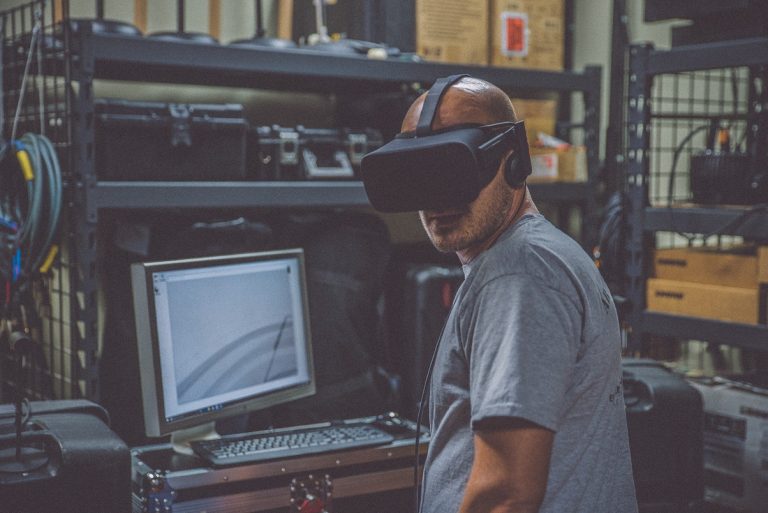 Image source
Image source